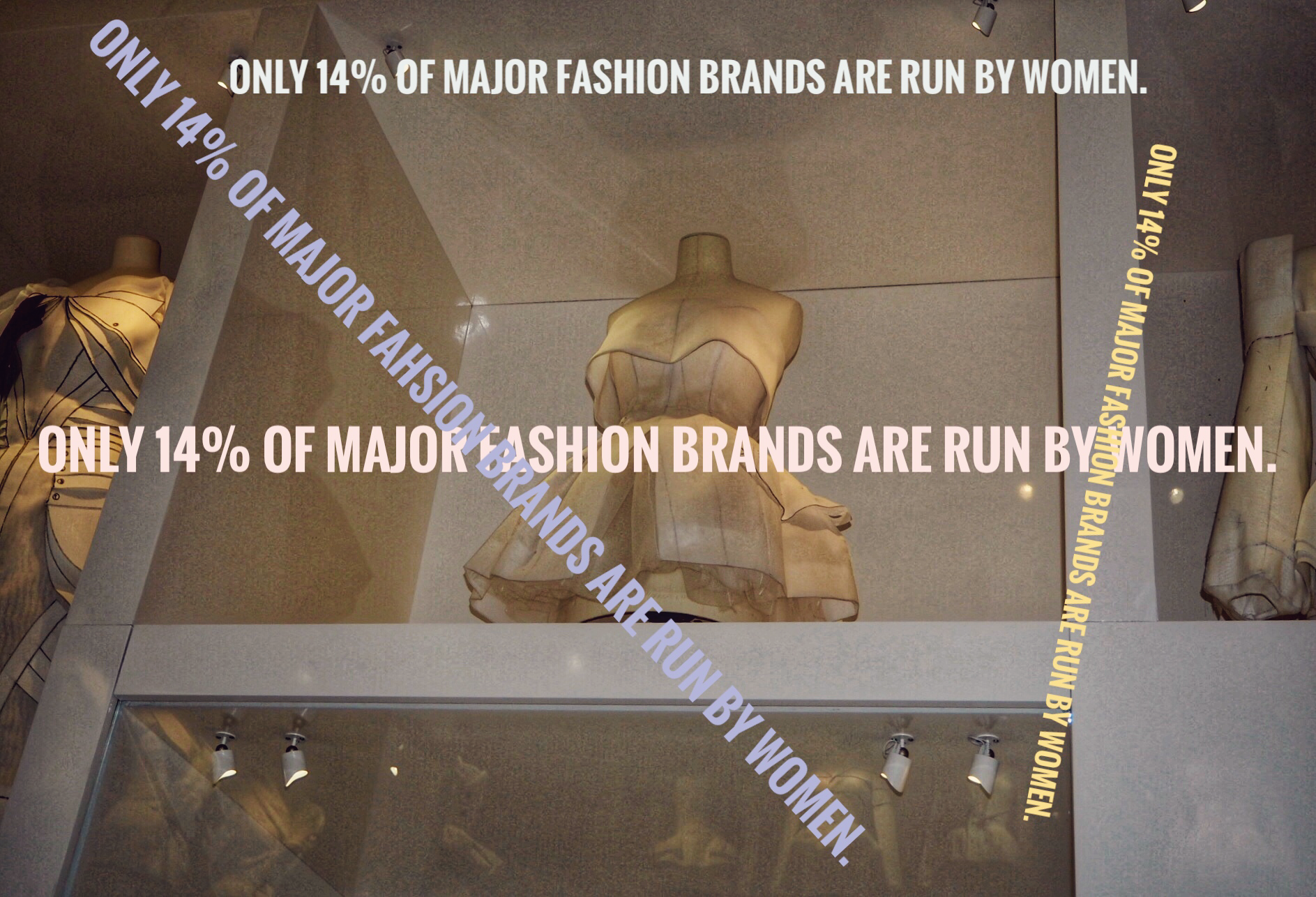[Written by Lily Kuenzler]
[Image Credits: Florence Bridgman]
The world of fashion loves women. It loves our bodies. It loves our money. It loves to sit behind a desk and tell us what to wear and at what cost. Unfortunately, that’s where the love stops. In an industry that focuses on and thrives off women, we are constantly excluded from the creative/business end of things. Only 14% of major fashion brands are run by women: a statistic that totally misrepresents the buying power we have in the industry (with women spending on average triple what men do on clothing). So what the hell is going on here? Why are the people in power so different from their clientele? And, crucially, how do we stop it?
In 2018, three of the top fashion schools in New York revealed 85% or more of their graduates were female. So naturally, in the lower tiers of fashion employment it tends to be women who make up the bulk of the workforce. But there comes a point where this stops: queue The Glass Runway. In 2018 a study of this name by Glamour and the Council of Fashion Designers of America (CFDA) found that men were quickly becoming promoted over their female counterparts, leaving the women behind in the lower and middle ranks, and heading straight to the male-dominated top. The study found that men were almost four times more likely to be granted a promotion without asking for it than women.
This disproportionate promotion of men in the fashion industry has led to some shocking pay-gap statistics. After new legislation in Britain last year forced companies to publish data on their gender pay, the fashion industry came off as one of the worst. Condé Nast Publications Limited, for example, who own several of the top fashion publications in the UK such as Vogue, Vanity Fair, Glamour and GQ, revealed that on average for every £1 paid to a man in their company, a woman earns only 63 pence. It is also worth noting that three quarters of Condé Nast employees are female.
But this is not a unique statistic – the women’s wear brand Karen Millen revealed an average pay gap of 49%, meaning men are paid almost double within the company. Benefit cosmetics had a pay gap of 30% despite women making up an overwhelming 90% of their workforce. When confronted about the 26% pay gap at Burberry, the chief executive Marco Gobbetti defended the statistic by denying unequal pay and saying: “The gap is influenced by the fact that we have fewer women in senior positions.” This answer came up over and over again. But how on earth does that count as an excuse? How do companies think they can explain away the pay gap with an issue that is just as troubling – structural sexism when it comes to promotion?
One of the big problems here is that the issue of sexism within the fashion industry remains, to many, unknown. Even within the field there is ignorance: in The Glass Runway’s survey of people working in the fashion industry, 100% of women interviewed said there was a gender-inequality issue, whilst less than 50% of men agreed. Diane von Furstenberg, chairman of the CFDA, says: “We don’t talk about [gender inequality in the industry] as much, because there’s a feeling everyone knows,” but I just don’t think that’s true. I know that until pretty recently, I had no idea of the extensiveness of the issue. We see women on the covers of fashion magazines and on the catwalk, and we forget to look behind the female face of the fashion industry to the male heart. Rose Marie Bravo, the ex-chief executive of Burberry, said: “You need visuals…You need to be able to think, ‘If she did it, maybe I can, too.” We need to highlight those female executives who have managed to make it to the top.
One such woman who has managed to put her face at the forefront of the female fashion business, is teen editor-in-chief, Elise By Olsen. At the age of only 13 she started up her own magazine – Recens Paper. The magazine aims to create an accurate depiction of youth culture – a magazine created by youths for youths. A fabulous example of how the creative and business side of affairs can be reflective of the clientele they are trying to reach. Olsen questions how adults are meant to understand or prescribe youth culture, in much the same way that we can question how men are allowed to dominate female fashion. But Olsen sets an example in more than one way: after her 18th birthday, she announced her resignation as editor-in-chief of the magazine, claiming she could no longer honestly serve as the best representative of youth culture and honourably saying: “I refuse to occupy or claim my title for egoistic desires.” Perhaps if the men of the fashion industry took a leaf out of Olsen’s book, and allowed women to design their own clothes and futures, we wouldn’t be in this dire situation.

